 Fiona Struggling to focus when you do classes online? Or can’t seem to shake off your kids for a bit of privacy? Worried about getting injured? We talk to some of the Yoga Inc online regulars for their tips to doing yoga (peacefully) at home. Are you the busy mama? Your kids are either screaming for you or jumping on you during the yoga session. They might even be parading in front of the camera to introduce their stuffed animals to your yoga class. It’s impossible to focus on your practice. What you can do: If locking them out of the room isn’t an option, “strategically align your kid’s meal time and TV time with the yoga class timing,” Celeste Phua, mother of two suggests. Jolene Goh, also a mother of two, agrees. She gives her daughters homework to complete while she’s doing her class. And because she shares her practice space with the rest of the family, she uses noise-cancelling ear phones to block out their conversations. If all else fails, wake up earlier than them to practice, Celeste says. She’s a regular attendee of the 7.30am weekday class – a great way to start the day, and get your yoga fix without the distraction of kids! Are you the overworked employee? Now that you’re working from home, you’re excited to book into a lunchtime class… but ten minutes before you are about to log on, your boss decides to call for an emergency meeting. You try to book in for the late afternoon class and the same thing happens again. In fact, it’s such a regular occurrence that you might as well be tied to your desk back in the office. What you can do: Book yourself into a “lunchtime meeting” with yourself so your colleagues don’t bother you, says a Yoga Inc member we cannot name, because she still needs her job. She is quick to add that she does put in a bit of overtime later in the day, to compensate for the time off she took! Or just do a class before work starts. 7.30am class fan, Yijun Liu, sleeps in her yoga clothes so she can literally just roll out of bed and into the virtual studio! Are you the tech noob? (or maybe trying an online class for the first time) Camera in front is easiest for you to see the teacher. But then got crazy flow teachers who change direction and turn to the back. Camera at the side is best for the teacher to see, but not the easiest for you. Where do you place the camera?? What you can do: Becks and Bryan suggest connecting your laptop to your TV so you can watch the class on the big screen, while your teacher watches you from the computer. If you don’t have a laptop, try a tablet connector. And if that still fails maybe log in with two devices – one for you to see the teacher, one for the teacher to see you (you only need to connect one to audio) Are you plagued by old injuries? You’ve had a knee pain or back pain or wrist pain or shoulder pain… or some surgery was done and you are worried that you will do something to hurt yourself again. What you can do: “I was apprehensive about doing certain poses at home while dealing with my injuries like bulging disks, a sprained wrist and a leg I had broken in the past,” Freda Lim shares. To settle her uncertainties, she did her first few online classes with a teacher she was most familiar with, so she knew what to expect. If it’s your first time trying out a new class, you can always chat with the teacher (with the chat function, not through the mic) before class to ask for modifications. Ultimately, better safe than sorry and the same things hold in the studio and at home: if you are uncomfortable, don’t push it! Are you constantly distracted? Suddenly feel a need to rearrange your bookshelf? Check your phone? Chat with your family members? We feel you. We also saw you…. What you can do: Don’t beat yourself up about it. That’s what it’s like practicing at home, and since part of the yoga practice is to be able to learn to focus, you’ve technically got a great training ground. If it’s atmosphere – or lack thereof – that bothers you, try asking your teachers for their playlists. Do what Shahdon did and make your own! Play the music on a separate device so it won’t affect the teacher’s voice. If all else fails, do as you would in the studio. Phones aside and/or on silent. Doors locked. Ear cancelling earphones in. And face a blank wall so the birds and trees or nice paintings can’t distract you. We hope these tips help you get more out of your online practice. So if you haven’t joined us online yet, find out the class prices, check out the schedule, and don’t let COVID-19 and limited studio mats get in the way of your practice! About the author
Fiona is a teacher at Yoga inc. She is still single and we want to help her find a boyfrend.
36 Comments
 Fiona Struggling to get a mat in your favourite yoga classes? Fed up with needing to stay up till midnight to play fastest fingers first to book your slot? Or maybe very dulan you cannot max out your monthly unlimited pass? Give online classes a try! It might take some getting used to at first, but these are some reasons why online yoga classes are a great option: More convenience! You only need a small space to do yoga. You can literally roll out of bed, click the link and sit in front of your screen. Imagine the time saved now you don’t need to wait for the bus or the train or find parking. No more stress in traffic jams and scrambling to make it in time for the five minute grace period. Now you can fit a class in before work starts, during your lunch break, while waiting for the laundry… which brings us to the next point. More choice! We offer 40 online live streamed classes each week! Going online increases the pool of classes you can attend at each timing, and unlike in the studio, there will almost always be space. Unlimited pass holders – you can now book as many back to back classes as you like. Doesn’t matter if it’s a public holiday, or if it’s a Saturday morning. Confirm can get slot. (The system doesn’t allow you book more than one class per day for now, so email us and we will manually add you in.) You might be able to attend more of your favourite teacher’s classes, or even try out new teachers and class types. As each instructor has a unique style of teaching, online classes are a great way for you to try out different styles to find out which resonate with you the best. More chance to cheat! Want to cop out on the core work and replace chaturanga with child’s pose? Turn off your camera and your instructor (we all know who they are) can’t call you out for slacking. Chances to cheat aside, being at home and having a choice to be “unseen” makes yoga a lot less intimidating. After all, there is always that person in class folding into some complicated pretzel shape or insisting on jumping into a handstand at each vinyasa while you’re struggling to keep up. You can keep telling yourself to listen to your body and respect your practice, but still feel a little thrown off and stressed. Not a problem at home if it’s just you and your instructor on screen. Ultimately, online classes are a great complement to practising at the studio, and will probably be here for the long run. Being open to a mix of both will help you find the time to practice so you can keep your fitness and health goals alive. So what are you waiting for? Visit our website and book a class now! All you need is a mat, and your phone or tablet or laptop. Need props like blocks and straps? Get creative with what you have at home, or visit the Yoga Inc shop and pick up a few things! About the author
Fiona is a teacher at Yoga inc. She also writes for a living so you can hire her to do that too. Congratulations to all mummies-to-be out there :) Being a prenatal yoga teacher, I have many students asking me questions concerning yoga during pregnancy. Therefore I think it would be good to compile a list of common questions for you, giving you a clearer picture of what you need to be mindful of during pregnancy. 1. When is a good time to start a prenatal yoga class? It is most recommended to start after your first trimester, that is usually after 14 weeks. During the first trimester, your body is adjusting to the new changes within and you tend to feel more tired, therefore it is better to stay relaxed until your body energy returns to normal. You may start a prenatal yoga class anytime during the second and third trimester. 2. How different is a prenatal yoga class compared to a regular yoga class? Firstly in a prenatal class, the whole class is full of pregnant ladies, just like you. The teacher is equipped with prenatal yoga knowledge and caters the class to postures that are helpful and safe for pregnant ladies. During a prenatal class, postures are adapted to strengthen and stretch related muscles to prepare you for labour and motherhood. A portion of the class is dedicated to relaxation and meditation to help pregnant ladies relax and cope better with any emotional stress. It is highly recommended for all pregnant ladies to attend prenatal yoga class rather than a regular yoga class in order to receive the benefits of the specialised practice. 3. Can I still attend a regular yoga class instead of prenatal? If you are a regular yoga practitioner, you may choose to attend a regular yoga class. However, it is important to highlight to the teacher your stage of pregnancy so that he/she may advise on certain posture you may need to avoid. It is also important for you to have some information on what you need to be mindful of while attending a regular yoga class (refer to qns 6). 4. What do I need to keep in mind while attending a regular yoga (ie: not prenatal) class? It is most important to acknowledge the differences in your body and how your body feels during the practice. Always try to maintain a steady pace of breath and avoid any postures that brings up your heart rate too much. Ideally, you should still be able to carry a conversation in any of the posture you are doing. Try to avoid regular yoga classes in the first trimester because the energy in your body may be low and you are still adjusting to the pregnancy. 5. Is it ok to practice hot yoga during pregnancy? It is not recommended to practice hot yoga during pregnancy. In a hot room, the heat adds pressure to your body and heart, hence your heart rate escalates even when you do simple postures. There may be a risk of overheating the body which may increase risk of neural tube defects and possibly other malformations. At Yoga Inc, we do not allow pregnant ladies to attend any of our hot yoga classes (hot basics, hot hatha, warm stretch). We believe that it is in your best interest that you keep a safe practice throughout your pregnancy and we thank you for your understanding. 6. Are there any poses I need to avoid during pregnancy? There are 5 basic rules relating to this question. 6.1. Avoid closed hip twists. During pregnancy, the most important is to provide space for the baby to grow inside your belly. Closed hip twist minimises the space for your baby, and may also affect blood circulation to the baby, so try to keep your twist on the open hip side. Eg of poses:
6.2. No Prone Poses (Lying on the Belly). After the first trimester, it is not comfortable to lie on the belly, and definitely not safe for the growing baby either. Eg of poses:
6.3. No Major Backbend. Deep Backbends may risk over stretching the abdominals, in worse cases it might even cause a tear in the abdominal muscles. With the growing baby, your belly is already getting a good stretch, so deep backbends should be avoided. Eg of poses:
6.4. No Inversions. Firstly, when the baby is already in position (head down), you do not want to risk inverting the little one. On top of that, your centre of gravity changes with the growing baby, going upside down might risk injuries if you lose the control. 6.5. No vigorous core muscles engagement. Gentle core postures are encouraged during pregnancy to maintain your fitness and core strength, this helps to support your pelvic muscle and give better control during delivery. However, it is important to modify your postures to help support your back muscles so that lower back does not feel too strenuous. Also it is important to check for abdominal separation (Diastasis Recti)prior to exercising the core area. If there are signs of DR, you need to avoid engaging the core muscles as much as possible, to reduce the severity of the problem. Eg of poses:
Do not be too concern if you are not familiar with the names of the pose, always let the teacher know your stage of pregnancy, and make sure you do not feel any compression of your belly during your practice. 7. I have never done yoga before, can I still come for a prenatal yoga class? Yes, there is no need for any prior yoga experience to do a prenatal class. It is never to late to start. 8. What are the benefits of prenatal yoga? The main benefits are:
On top of these benefits, prenatal yoga helps build a community of pregnant mummies and progress in your pregnancy journey together, to bond and share information as a community. 9. How far into the pregnancy can I keep practising yoga? You can continue practising prenatal yoga up to the day you pop! Although it is recommended that towards the end of your pregnancy, take the practise more gently and focus on more relaxation and restorative postures. 10. When can I resume my regular yoga practice post natal? If you went through a natural delivery, give your body at least 6 weeks before you dive back onto the mat. However, do not push yourself too much at the beginning, be mindful that your body has gone through a lot of changes and you need to give it time to heal, recoup and rebuild. To add on, the added stress of being a new parent might take a toll on your energy level, hence it is important to be patient with your practice and pace yourself. If you went through a Caesarean delivery (C-section), your body needs more time to recover. It is after all a major operation. It is advisable to avoid strenuous activities for the first couple of months. Simple postures such as pelvic floor exercises can help to strengthen your core muscles and protect your lower back. Always consult the doctor to ensure that you are well recovered to be back on the yoga mat. I hope this addresses some of your concerns regarding yoga during pregnancy. Always remember to stay happy and positive during your pregnancy. Happy Mummy, Happy Baby:) P.S. Check out the prenatal classes offered at Yoga Inc! As Krishnamacharya said, "If you can breathe, you can do Yoga" It is also my belief that everyone, regardless of their ages, can practice Yoga. Due to the ever competitive lifestyle in modern society, it has been increasingly popular for kids to start practicing Yoga at a younger age and some schools have also introduced Yoga to help students manage stress and energy levels. Here are some of the many reasons why kids should do Yoga : 1. Non-competitive Your mat is a safe space where you can practice at your own pace and at your own means. In contrast to many other curriculums at schools, there are no grading or tests for your Yoga practice. There are no audience to watch you perform nor spectators to watch you compete. Therefore, there is no #1 position for kids to fight for, and every one is a winner! It is an activity for kids to learn more about their themselves, to move, relax and not stress about having to win at everything. 2. Increases ability to focus and relax. Balancing Yoga asanas (poses) can be very fun and exciting for kids. It trains them to ignore distractions and direct all their attention towards the pose they are working on. This can help to improve concentration levels in school too! Many kids have told me they are constantly tired and stressed out. When we are nervous or frustrated, our breaths tend to be shallow and quick. Introducing breath awareness can help them to calm themselves in tensed situations and learn how to manage their emotions better. 3. Promotes a better posture, body structure, motor skills Bones, tissues, muscles of kids are still soft and growing. The long hours of sitting through classes and carrying heavy school bags place immense pressure on a kid’s body. Yoga asanas help to build strength and flexibility which are important for a healthy physical development. Asymmetrical poses also help with the body’s left, right coordination. 4. Educational and inspires creativity A wide range of knowledge (e.g. maths, science, language skills etc.) can be passed on to kids throughout the session so they are learning and having fun at the same time. Kids Yoga classes are designed to be enjoyable and interesting to encourage active participation. Unlike a typical adult class, creative elements such as animal noises, music, props, crafts are incorporated into the sessions to stimulate the kid’s imagination. 5. Body awareness, mindfulness and self acceptance During the class, kids start to learn more about their own anatomy, feel certain muscle engagement or stretch in various poses and how to control their breathing to find focus. Very often, I would also ask the kids how they are feeling before and after class. I would thank them for sharing without passing judgement. This encourages them to share their feelings, opinions and thoughts freely. This eventually led to a heightened sense of self-awareness. Having a mindful practice often continues off mats, which encourages kids to love themselves, take care of their own bodies and health. There are countless of benefits for kids to do Yoga. And as their practice deepen, they grow to be stronger, both physically and mentally; they tend to be more loving, confident and have more compassion for others. On the other hand, teaching kids yoga has been a very rewarding experience for me. Their willingness to learn, their curiosity of the asanas and their creativity never fails to inspire me. About the author
Joy is a teacher at Yoga Inc and she is a Jiak Buay Dua Kid herself. P.S. Check out our School Holiday Kids Yoga @ Yoga Inc Punggol!  Catherine As a teacher, I often get people asking me about teaching yoga. There are several concerns or questions that pop up so here's my humble and brutally honest experience after teaching for a while. It certainly won't be the same for everyone. If you are considering teaching or taking training, this is for you. 1) I want to get away from 9-to-5 and corporate bullsh*t Sometimes, I think people think that teaching yoga means you won't suffer from office politics. You can "get away from the corporate grind'. Let's put it this way: humans are humans wherever you go. Depending on where you teach, it can get very competitive and political. I am fortunate to be surrounded by lots of nice people. I am so grateful for the angels in my life. Your job may not be 9 to 5 and you may seem to have pockets of time in between where you are not teaching. However, the fact is: you may actually spend more hours working. Your day may start at 6am and end at 10pm. Your free time in between may be spent on planning, studying, practising, commuting or simply catching up with rest. You may be working while your friends or spouse are not so your social life may change. You have to worry about numbers too. KPIs don't just exist in corporate jobs. Depending on where you teach, you may not be able to take leave as and when you like. 2) Teaching yoga seems easy. It looks so zen. It looks more glamorous than it really is. Instagram makes teaching look like a cycle of cool poses, green smoothies and funky outfits but the truth is: it is demanding physically, mentally and emotionally. You have to think about what to teach, keep yourself updated, lead people through a safe practice and stay authentic through it all. People often don't see the amount of information that goes through a teacher's brain while trying to look zen and hold the space and energy of the class up. You will experience moments of exhilaration as well as moments of doubt. On top of that, people expect you to be zen and always know what to do but you are a human too. You can be so tired at the end of some days that when you get home, you just want to vegetate at home with a good show and not talk to anybody. 3) Can you make money teaching yoga? A teacher's income is often determined by the amount of hours spent teaching. Even teachers who run trainings and seem to earn a lot with less hours teaching put in a lot of work to make those trainings happen. Those hours could well exceed hours the student sees. I do not know any teacher who makes reasonable or really good income without putting in the work. Like a friend said recently, 钱难赚!Yes, you can make a living but if your goal is to make lots of money, there are other easier ways. If you are willing to work hard, a reasonably comfortable lifestyle is possible. 4) Must you know how to do all the poses? I wish I knew how to do all the poses! Truth is, nobody knows how to do ALL the poses. The asana practice has evolved to thousands of poses. It is not humanly possible to expect someone to know all of it. Everyone's body is different too so there will be some poses that will be impossible for some bodies no matter how long you practice but there are also many poses that will come with time. You do need to have practiced for a while before attending training but the most important thing is you have the heart to learn more and serve others through teaching. There will be a different teacher for a student at different stage of their practice. Your teaching may be different from other teachers and there will be students out there who will appreciate what you offer. Asana is but just a very small part of the overall system of Yoga. Wow it sounds terrible to teach so why teach? Because if you love the practice and want to deepen your practice, teacher training is a good way of understanding your practice more. I often hear of people saying they didn't go to training intending to teach but end up feeling so enthusiastic about teaching that they can't wait to start when they finish training. Because if you dislike working in stuffy rooms with recycled air-con air like me, being on the move and teaching in wide spaces will be a godsend. Because you do have some control over how you would like to design your day and how you would like to spend your time. There will be trade-offs for every decision but you will be the one who gets to decide. Because teaching does remind you of the need to stay healthy in all areas of life. Because if you find joy in seeing others light up and smile at the end of class, watching others grow in their practice before your eyes or helping others with alleviating their pains and aches, the job satisfaction of teaching is priceless. You may not save the world but you have a real opportunity to make a real difference in someone's life. It's the thing that keeps many teachers going. If you love what your teacher did, tell them.You can't imagine how encouraging it is for a teacher. About Yoga Teacher Trainings... Whether you decide to teach eventually is secondary but if you love the practice and are thinking of taking the next step, do it. You will learn so much more about the practice and most importantly, yourself. In a teacher training, you will learn a lot about poses amongst many other things and you may take your practice further but to me, one of the most important components of a teacher training is learning how to teach. Yoga Inc is having their 3rd round of 200 hour Teacher Training in July this year. Something I really like about how they structured the program is that participants are given lots of opportunity to teach early in the program. I do hear of people attending training being fed with lots of information but not actually taught how to teach. Both the trainers, Christine and Jing, are friendly, supportive teachers and Yoga Inc is a casual and friendly environment to undertake this intensive program. A 200 hour certification is merely the first step. You leave a 200 hour training having learnt a lot, but also learning how much more you don't know. The journey of learning will be a long one but if the thought of doing a teacher training has crossed your mind, it probably already means you have the heart to learn and perhaps, the heart to serve. And that is enough :) About the author
Catherine is a teacher at Yoga Inc and she did not receive any bribes to write this article. (She's waiting to be bribed * hint *) Whoa it's already December. A season of celebration, makan sessions and get togethers with family and friends. Also a season of reflection and setting personal goals and intentions for the coming new year ahead. Here are a few reasons why you should include yoga in your New Year’s Resolutions Yoga helps improve health and wellbeing If you find yourself waking up in the morning feeling stiff, ache-y and break-y, consider how yoga can increase mobility and flexibility. Other health benefits include improved balance and coordination, lower cholesterol and blood pressure levels and everyone’s favourite –weight loss andstrong toned muscles 💪🏼 Yoga helps detoxification One too many good 'spirits', too many Christmas cakes and turkey can make your body feel sluggish and lethargic – no way to start a new year. Sweating it out in hot classes or doing lots of twists and forward bends in your favourite hatha or flow classes can help wrie out toxins from your tired and overworked digestive organs and make you feel more refreshed! Yoga keeps you young People who have practiced yoga longer have brain structures typical of younger people. Studies show the regions of the brain responsible for learning, memory, cognition and emotional regulation “grows” after doing yoga - even if practicing the slower meditative forms. In contrast, the areas of the brain responsible for fear, anxiety, and stress shrink. (Note to self : practice more handstands 😖to conquer self mental block) So pick up yoga and you may find yourself learning a new skill – whether a new language, sport or musical instrument with greater ease and confidence this coming year. Your brain will resist less! Yoga helps you keep calm and carry on Let's face it. A new year will be wrought with challenges whether at work or in relationships. We need to stay calm and present in the face of those challenges rather than get crazy-reactive and regret our words or actions later. Focusing on mindfulness in yoga poses or being reminded to breathe translates off the mat and can help us refrain from acting in hastiness and confusion, but with clarity. When you’re about to binge eat your unhappiness away, burn a hole in your wallet shopping online when stressed, or spew expletives at your colleagues, you can remember to keep calm, breathe and carry on! Yoga teaches self acceptance The truth is that the practice of yoga is not about changing the body or the brain. It’s not about handstands or even about gaining greater happiness and joy. If it were, it’d be just like taking a spinning class or going to a gym. In a culture in which we rush from day to day meeting targets and deadlines, constantly trying to change our bodies and lifestyles, we can feel so lost being pushed in many directions. As Buddhist teacher Perma Chodron explains: Personally, this is the best reason to practice yoga: to be kind to yourself. And perhaps, to be able to kind to yourself means you will not set new year resolutions according to external standards – and then break them just a week into the new year. Instead, you may create a few personal markers which you can shift and adjust up or down throughout the year. In doing this, you will find great freedom and fluidity in your resolutions - ultimately isn't that what we truly seek? About the author
Christine is a teacher at Yoga Inc and she will Kali* (grill, whack, poke-your-muscles, adjust) you if you don't hold poses properly in her class *Kali is the name of a goddess who fight demons and trample on them to restore righteousness. Damn Fierce one. P.S. Need more motivation to include Yoga in your New Year's Resolution? Check out Yoga Inc's 3rd anniversary promotions and 21- day yoga challenge in Jan 2017! Yes! While it’s true that most yoga classes are attended by mostly fit and flexible females in tight clothes, yoga is not a ‘sport’ for ladies. There are many of reasons why men should pick up yoga. (and picking up women is not one of them!) 1) Flexibility! That is what everybody thinks yoga is about, and yes you’ll gain flexibility with a consistent practice. You will be able to touch your toes sooner than you think. The many twists done in class will help your golf swing and tennis game, and the hip flexibility will help in rock climbing. Flexibility is a bonus for EVERY sport! 2) Range of motion! Ok, confused? People often assume range of motion is flexibility, but it’s a little bit different. Well, same same but different lah. Most guys that work out a lot know that they have certain tight muscle groups that are bothering them. The stretching in yoga helps in range of motion when translated into weight lifting. For example, in a squat at the gym or even at a cross fit studio, trainers sometimes will say ‘ass to grass!’ If you hip flexors are tight how to ass to grass leh? Yoga will help increase your range of motion and also help you to get better muscle tone and bring strength faster! Which leads me to the next point... 3) Tone muscles! Yes, yoga can help to tone muscles. Why you don’t believe me? Chaturangas and arm balances are not easy ok! One just needs to think of yoga as a body weight exercise. Chaturanga is similar (but not the same) to a bench press, and think of the nice quads you get with all the standing lunge postures! 4) Injury prevention! Wah…. like snake oil leh, yoga can do so many things meh? Well… yoga forces you to balance, work your body in new and unaccustomed ways, strengthening the smaller stabiliser muscles. These muscles are usually neglected, and a weak link that would lead you to injury in sports or in the gym in the long run. 5) Practicality You do not need any special equipment and space for yoga. A yoga mat and a small corner in any room would be sufficient. This is effective for our busy lifestyle and travelling. Also, no special clothes are needed, unless you are like me, who need to match my outfits. In conclusion, yoga is both a physical and a mental practice, and even suppose to help in the bed room - don’t quote me ah! This one Birkram Choudhury the founder of Birkram yoga say one! So men, try a yoga class today, and maybe you will be surprise how yoga may give you a physical challenge that you didn’t see coming. P.S. Yoga Inc has a 5 Class Intro Pass for only $70! About the author
Ric is a teacher at Yoga Inc and his outfit doesn't always match. You can follow him @ric.yoga Nothing disrupts the class mood like a latecomer. (Just like when someone enters the cinema 10 minutes after the movie has started). Emergencies aside, a little bit of planning and giving yourself enough time to travel and arrive at the studio, will make your next yoga class a lot more pleasant! If you are a new student, arrive 15-20 minutes early. This gives you some allowance in case you have difficulty locating the studio for the first time. There will be some administrative work involved for new students and we may need to brief or show you around the studio. Also, isn’t it nice to give yourself that extra few minutes to settle into an unfamiliar environment? Arriving 5-10 minutes early = On time. You need time to sign in, play with Ah Bui (if he’s in), get changed, put your bags in the lockers, make a quick visit to the toilet, fill up your water bottle, pick your favourite mat, gather props and settle down. Arriving on time = late. By the time you are done with all of the above, the class has begun. What should you do if you are late? Check with the receptionist if you can still join the class. Most teachers at Yoga Inc do not mind you slipping in less than 5 minutes late. Do respect the studio's decision on whether it is appropriate for you to join that class. If you are denied entry to the class, please do not take it personally. You can sign up for the next available class or, come back again next time. If you manage to join the class late, be considerate. Do not take your own sweet time to choose a mat or walk across the room slowly to take a block/strap. Pick a free mat that is closest to the door and make as little movement/noise as you can. Pet-peeve 101: A lot of people see their mats as a personal space. When the class is crowded with no empty mats near the door, try not to walk across the room like a boss and step on everyone’s mat. You don’t like your bed to be stepped on by strangers, right? Same thing. Perhaps you wonder: Why are we so rigid about punctuality? Being punctual may not be important to you, but it should be an etiquette to observe when you join a group activity e.g.: group yoga class. Class has started and the instructor has to pause his/her instructions to attend to you. The class is put on hold. Even if it is a short hold, everyone's focus and attention got diverted, because of you. For the latecomer, it can be challenging to settle in when you are in a rush. You would have missed the breathing exercise that helps to centre your focus. Warm-ups may have started or been done. By being late and rushing to catch up, your mind and body may not be in sync with the class momentum. More importantly, you may feel paiseh (embarrassed) to interrupt and inform the instructor of any injury you may have. Either way, the class experience becomes less pleasant for everyone. "Can't you make an exception for me just this time ?" No. We are sorry but our answer is no. We know you have a very good reason for being late. We know you made a lot of effort to arrive at the studio. As much as we understand your frustration, we have other students to answer to. Someone in that class may have been turned away before for being late. Others may think it's ok to be late next time since we let you in. We will be opening a can of worms if we make any exception. It's not just about you. So please don't make things difficult for the receptionist, because nobody likes turning a customer away and she feels just as bad! It is the mutual respect we have for one another that makes it more fun to bend together! So next class, come early ok? About the author
Ashley is a teacher at Yoga Inc and she occasionally uses aroma therapy oil at the end of her classes... on smelly students. Haha! (She uses it on everyone lah) 12 photos that shows we are pretty good at making use of small spaces... for yoga lah... of course. See more on our Instagram! @Yoga_Inc #yogainsmallspace
I've been teaching yoga for a couple of years. I know I should get used to this by now but sorry, it irks me now as much as it did before when people tell me 'Nope, I won't do this class because it's not hot. I want to do hot yoga to burn more fats'. The next thing you see is a good 10% of the class resting in child's pose in the well heated room - and these are people who choose to practice in a heated room to burn more fats. Yes, heat will make you sweat a lot. That is the truth. But if heat can burn fats without you exerting physically, then I would sit by in the pool daily and enjoy the mid afternoon sun, with the application of my tanning oil as the only physical activity. I will sweat buckets but I don't think anyone would believe me if I say I am going to slim down just because of this. The same goes for hot yoga. Yes, the heat makes it harder to breathe, easier to sweat, and the class becomes tougher. But that is precisely when u may start losing focus on your practice because you have to deal with the heat at the same time. And when the teacher sees that many people are starting to take breaks, it is a signal to start making the class a little easier, a little less physically exhausting, a little more relaxing - this is obviously not what you want to happen if your main purpose of practicing yoga is to lose weight. So I say focus on your yoga practice, go to a class because you want to learn from the teacher, because you need a kick in the butt, or because you want to feel the energy of a group of people practicing together. Don't go to the class for the heat. If you want to have a good workout, try a flow class which is faster paced and keeps your heart pumping hard. Reflect on your past experiences. If you ever notice that the heat does distract you from your practice or worse, causes you give up mid way through class, then hot yoga classes might not be the most suitable for you. Open up your mind. Keep your practice fun, fluid and enjoyable. Understand that yoga is not about burning calories or losing weight, that is just the by product of your practice. Practice, and all is coming. What heat? Anyway, isn't Singapore warm enough already? About the author
Joing is a teacher at Yoga Inc and she teaches in a bit of singlish. She flips die people and plays mandopop in flow class. Go to her class confirm will sweat and lose weight one. No need heat. So Ashly was updating Yoga Inc's website and it suddenly dawned upon her that we should have a blog to archive events and share news and information!
|
|
©Yoga Inc 2013-2023
|
|

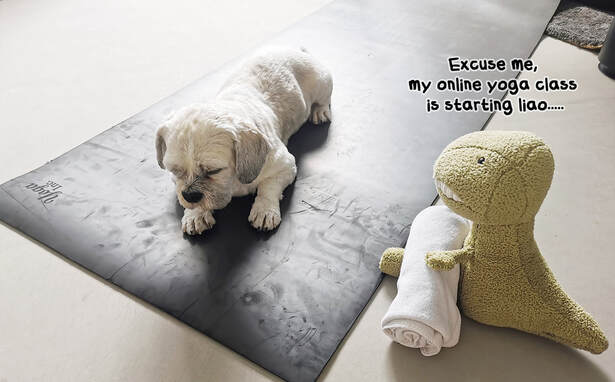



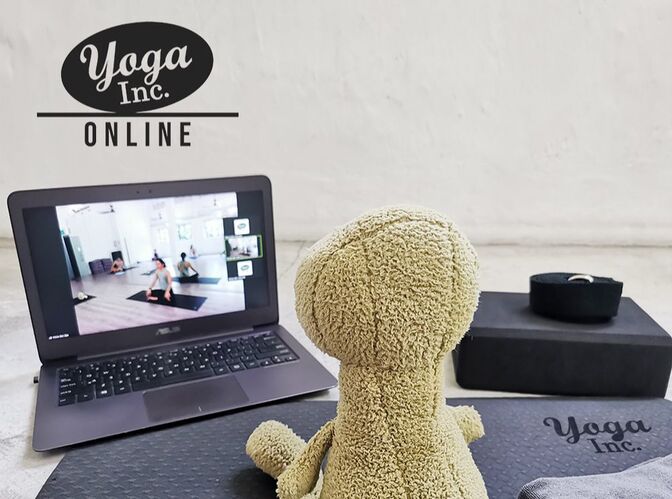


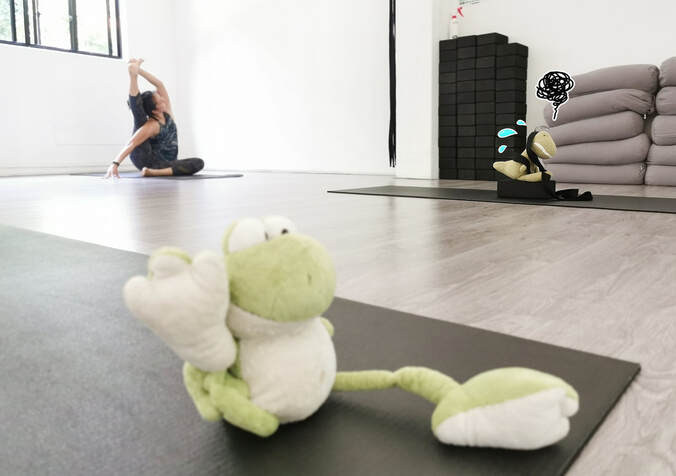

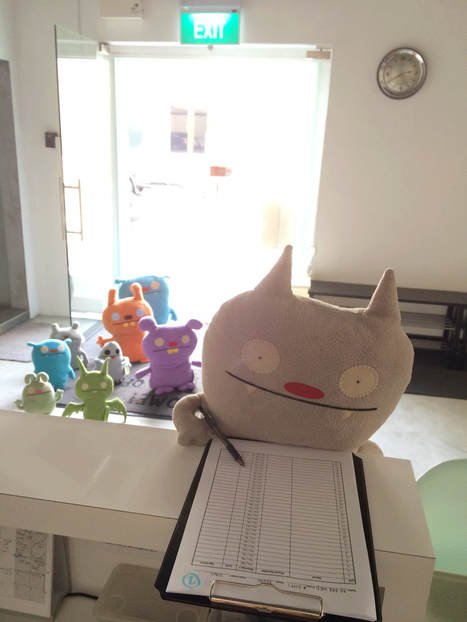
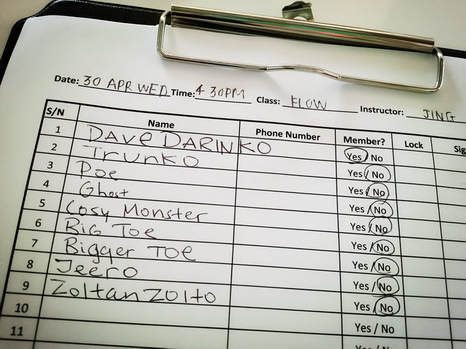
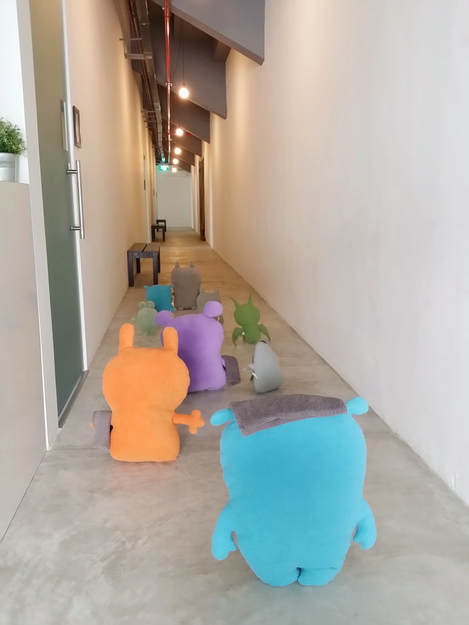
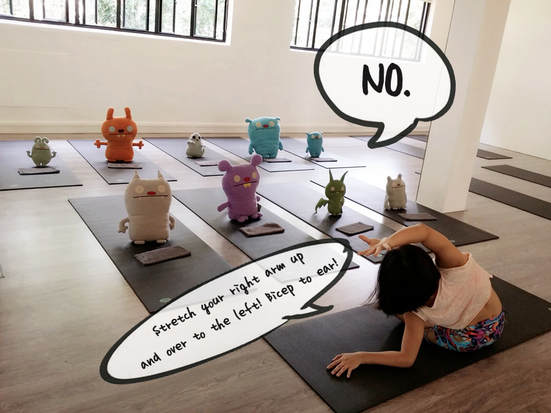
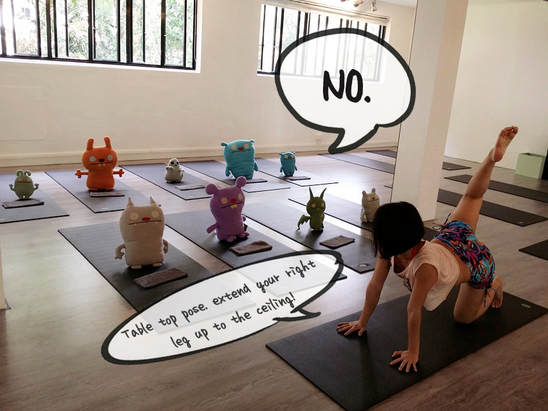
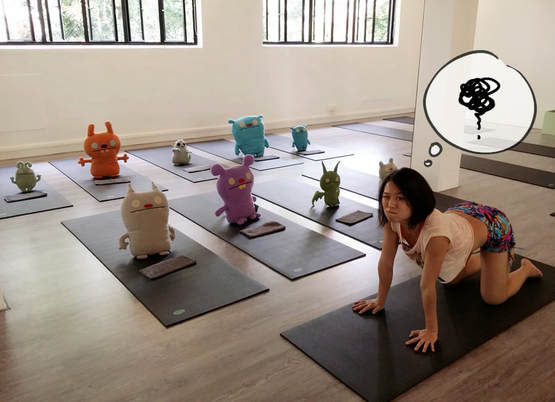
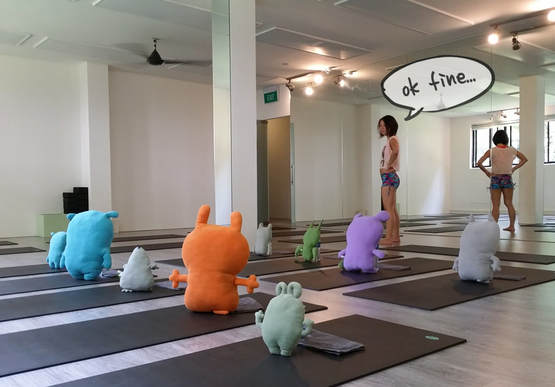
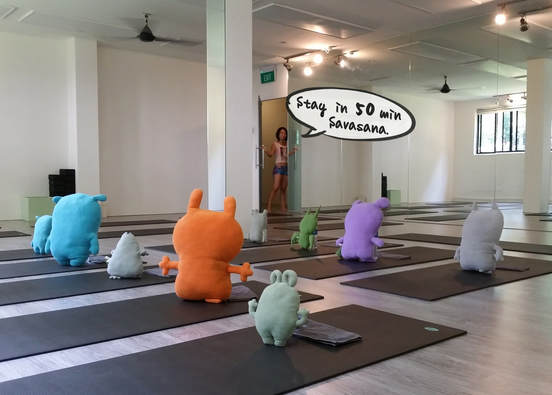
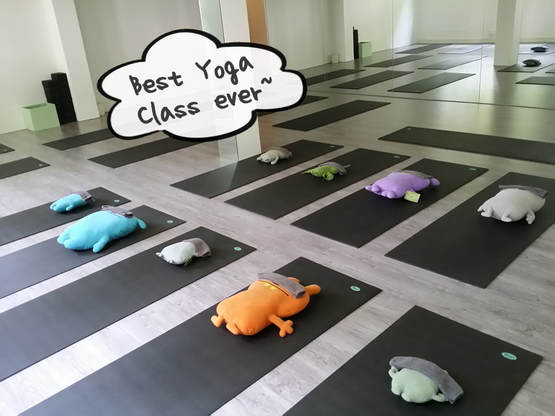




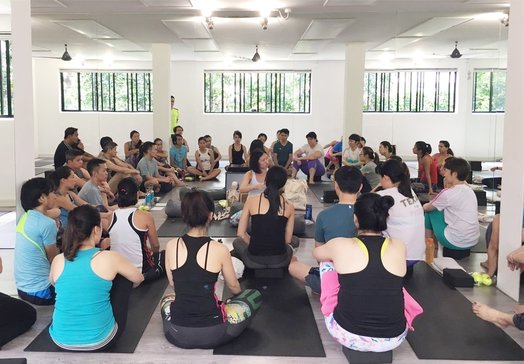
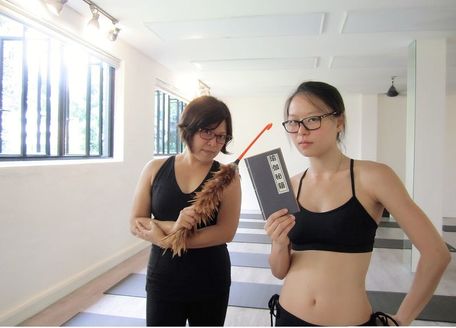





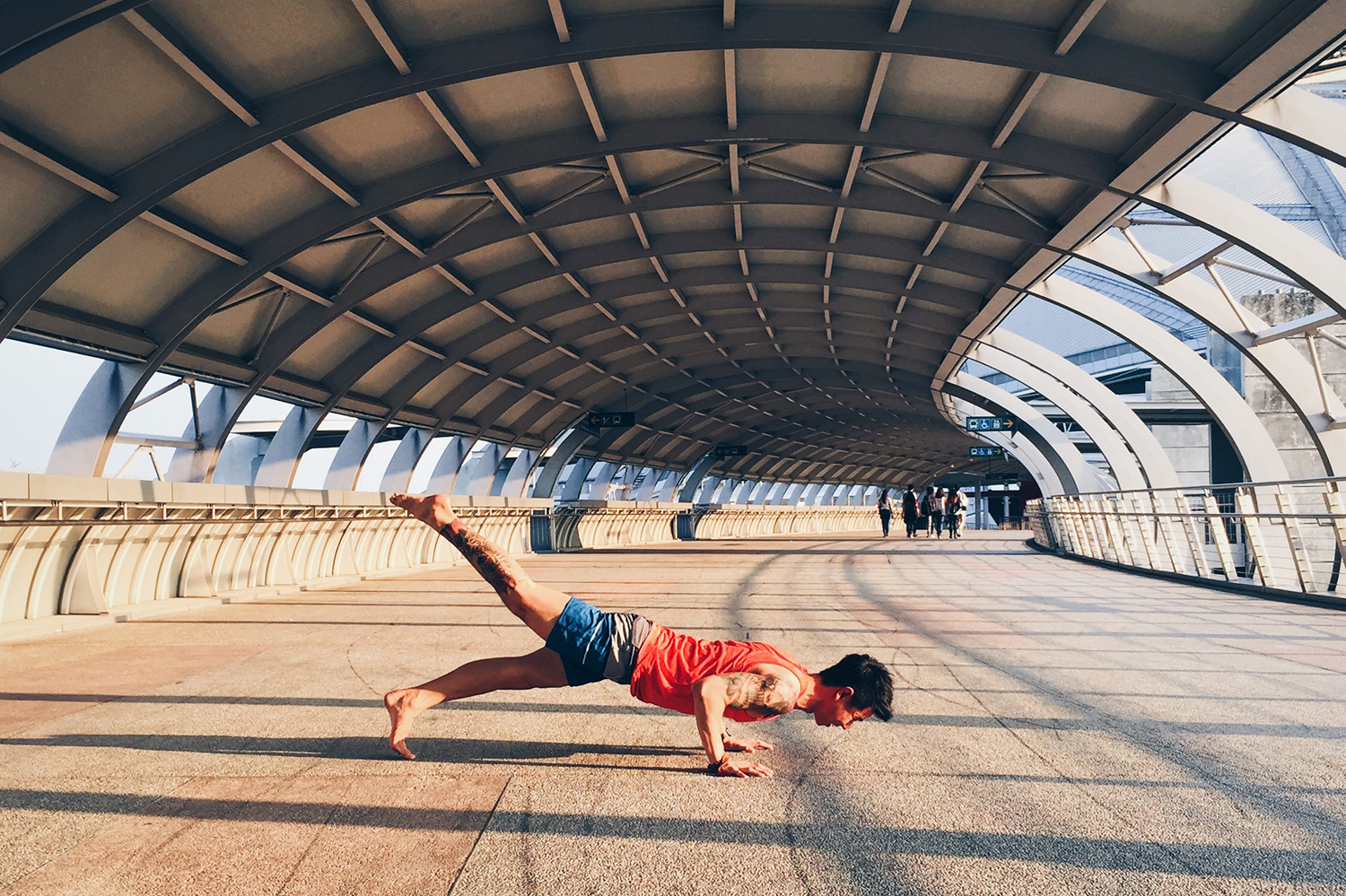

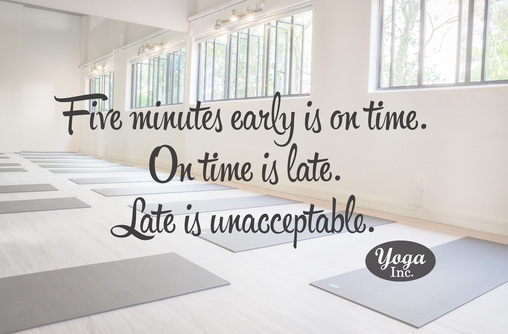
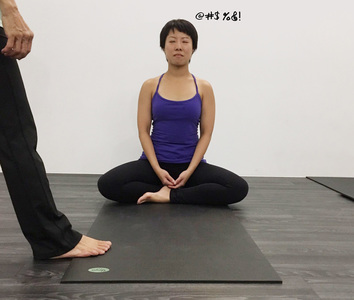



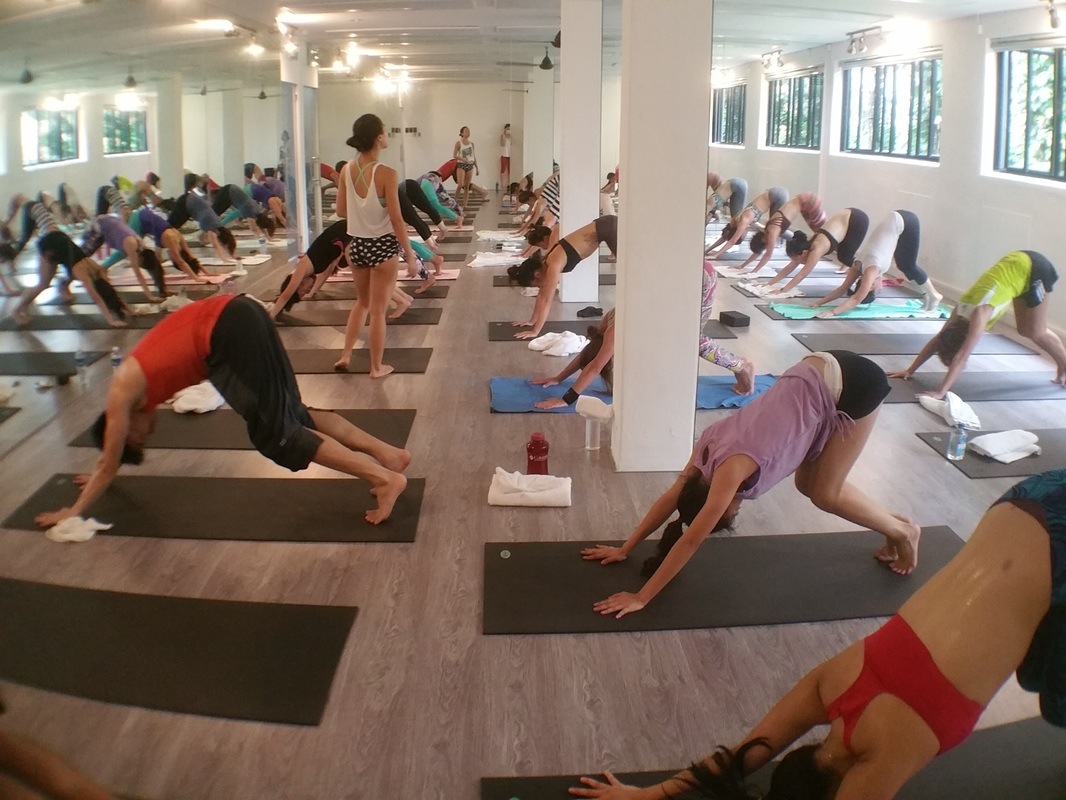


 RSS Feed
RSS Feed